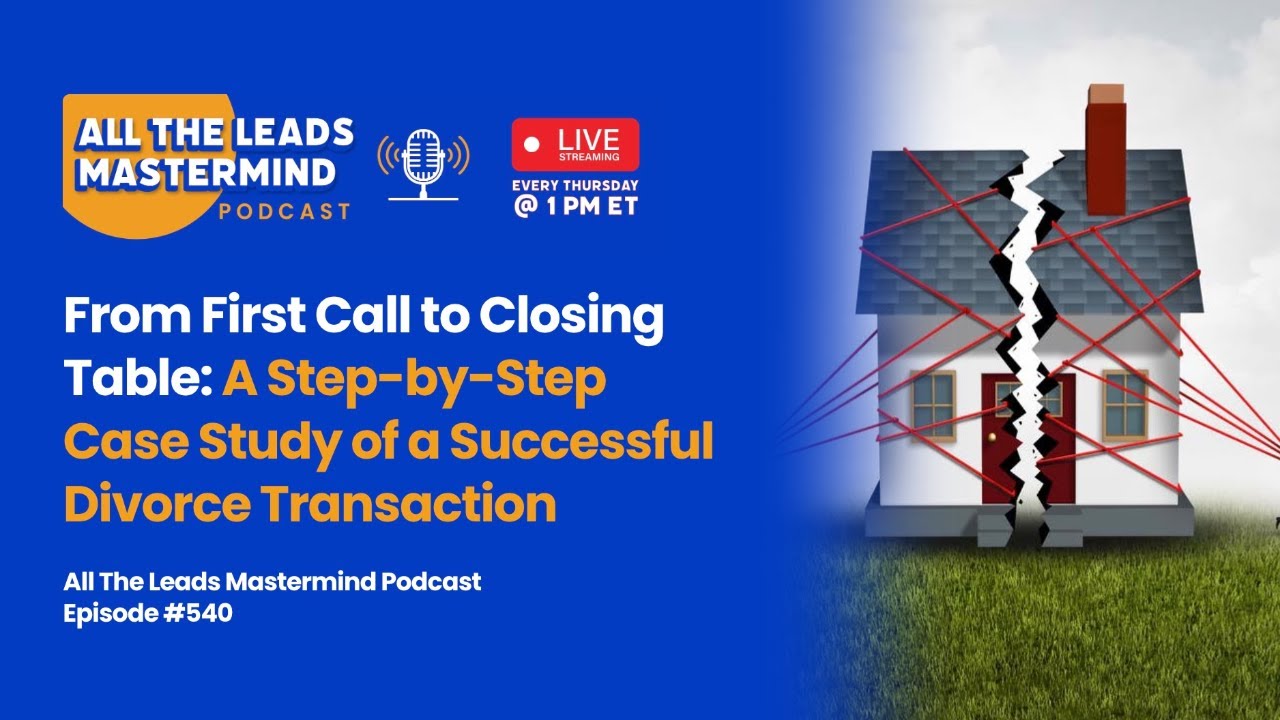These episodes are recorded as a live Question and Answer Mastermind with participation from agents and investors across the country. Thanks for tuning in, and don’t forget to subscribe for future episodes!
In today’s episode of the All The Leads Mastermind podcast the panel explored how to build a strong business pillar around divorce leads by approaching them with neutrality, structure, and empathy. Tim led a case study walkthrough from first contact to closing, highlighting the emotional complexity of divorce compared to probate, and stressing that a single misstep can end the opportunity. The team emphasized the importance of clear, consistent communication with both spouses and attorneys, setting expectations early, and avoiding emotionally charged language. Bruce and Jim discussed how to use data, not emotion, when guiding clients through listing decisions, while Alyssa introduced a new downloadable divorce toolkit including checklists, scripts, and marketing templates. Bill Bird shared how staying neutral helped him earn listings and post-sale business from both divorcing spouses, and how net sheets became a key tool for diffusing tension and moving deals forward. The episode wrapped with reminders to lean on professionals for mediation when needed, focus on life-event nurturing, and always lead with value. With divorce rates rising, the panel encouraged agents to seize this opportunity and position themselves as the steady, trusted guide during turbulent transitions.
00:00 Introduction and Overview
01:03 Understanding Divorce Dynamics
04:23 Initial Client Interaction
12:23 Handling Offers and Negotiations
14:14 Closing the Deal
15:58 Post-Closing Opportunities
26:39 Q&A Session
33:27 Sharing Personal Experiences
35:33 Advice on Handling Different Client Scenarios
37:38 Success Stories in Real Estate
39:20 Strategies for Divorce Real Estate Deals
43:33 Importance of Neutrality in Divorce Cases
47:41 Partnering with Realtors
51:32 Staging Homes for Maximum Impact
57:22 Encouragement and Resources for Success
01:02:37 Final Thoughts and Closing Remarks
